Case study: Consensus
Overcoming hurdles with the leading demo automation SaaS
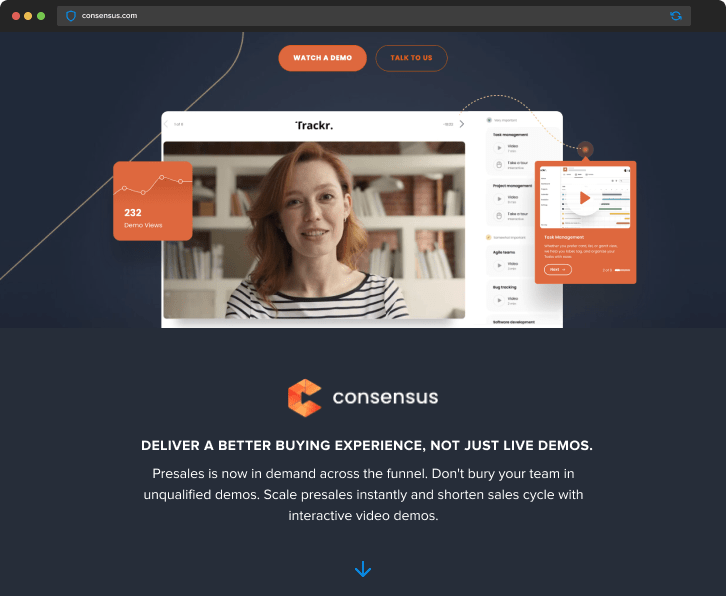
An introduction to Consensus
Consensus aims to shorten the sales cycle with intelligent interactive video demos. No business can survive without making sales, so presales are big business!
The challenge.
The enterprise sales cycle can be complicated, especially when you get into larger ticket sales. Challenging the way that businesses work at a core level is always tricky. Fortunately, automation can help save an incredible number of billable hours every month, freeing up sales staff for higher touch areas. Can we convince sales managers to put their presales in the hands of software?
The process.
Consensus already had a basic version of its automated video platform but was missing key features. Starting with the existing designs, I looked at how best to meet the requirements while keeping users happy.
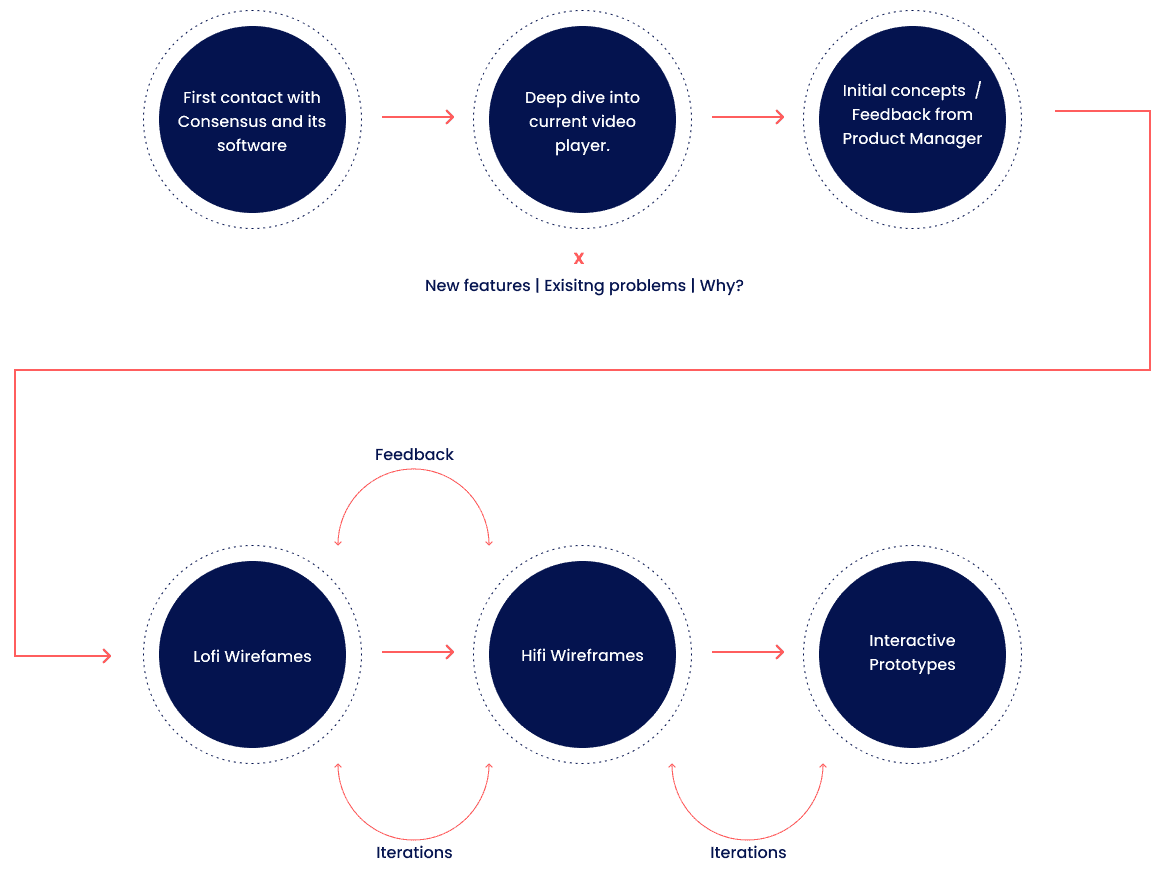
Problems and challenges.
Including longform sales documents into a video player.
Enterprise sales can be data-heavy; even “simple” processes can include extensive documentation. I needed to find a way to allow potential clients to access this additional documentation while watching a sales demo.
Long video chapter titles were fundamental.
You’ve probably seen how YouTube shows video segments at the bottom of its screen, accompanied by short descriptive text. Consensus needed full-length descriptive titles that were accessible to viewers. This was problematic. Displaying a whole sentence as a “title” would need a solution.
Designing “unfinished” features.
As with many projects, you are working “on the fly.” This can be challenging but also one of the exciting aspects of a product. New ideas and directions appear when the product manager sees how something develops. This means adapting designs while keeping the product highly usable.


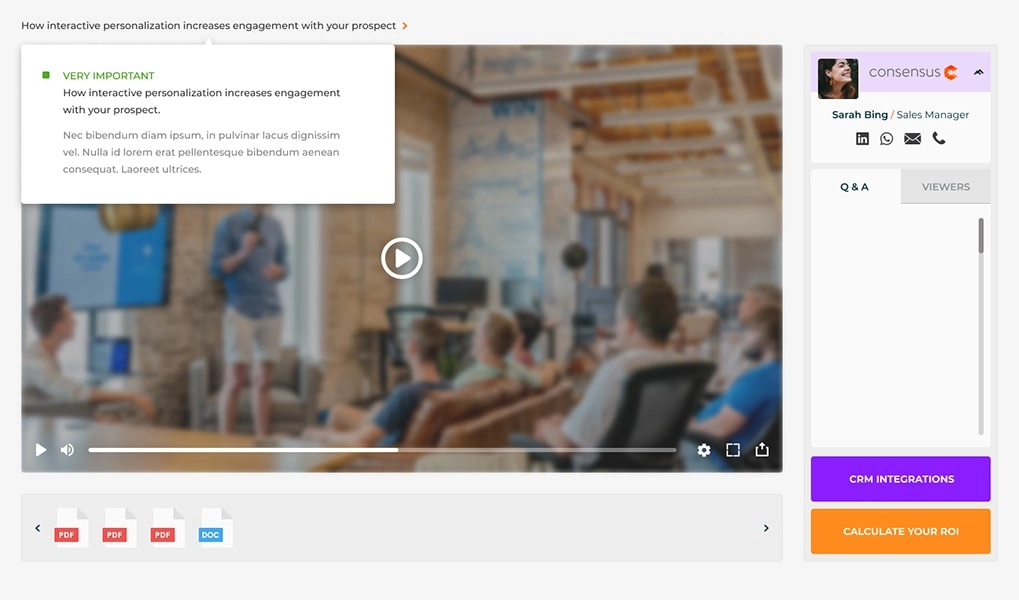


Project expectations.
Consensus was enjoying huge growth, and the product needed to grow alongside their clients’ needs. This meant being agile was key. We put together iterations, sent feedback, and continued until all stakeholders were happy. We needed to ship quickly to keep up with the growth, so communication was key.
Being on a different continent meant working asynchronously. Using Figma and Loom we were able to communicate seamlessly.
Understanding the problem
Personas or real-life customers?
I worked with Consensus’s senior product manager, funneling all data through him. Their large customer base gave them access to real-world information from paying customers.
As I have mentioned in other case studies, I’ll always go with the data if it’s a choice between personas and real-life users (customers).
The iterative process.
An initial version of the product existed, which was great as it gave me a jumping-off point. The requirements were updated as iterations were presented. This meant it was a fun period of creative UX design ending with high-fidelity mockups and prototypes.
I really enjoy the process when the back and forth is fluid, and people are bouncing ideas off each other.
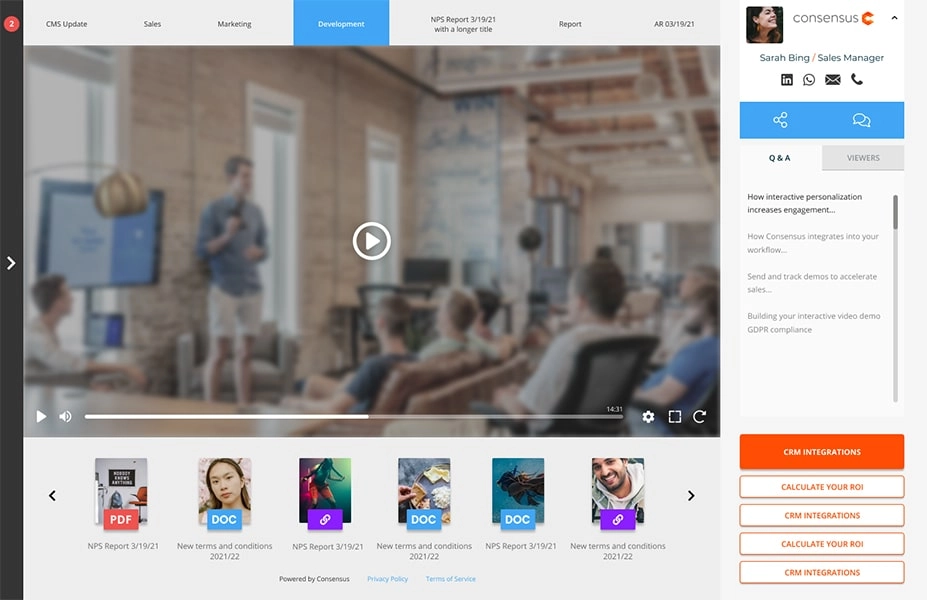
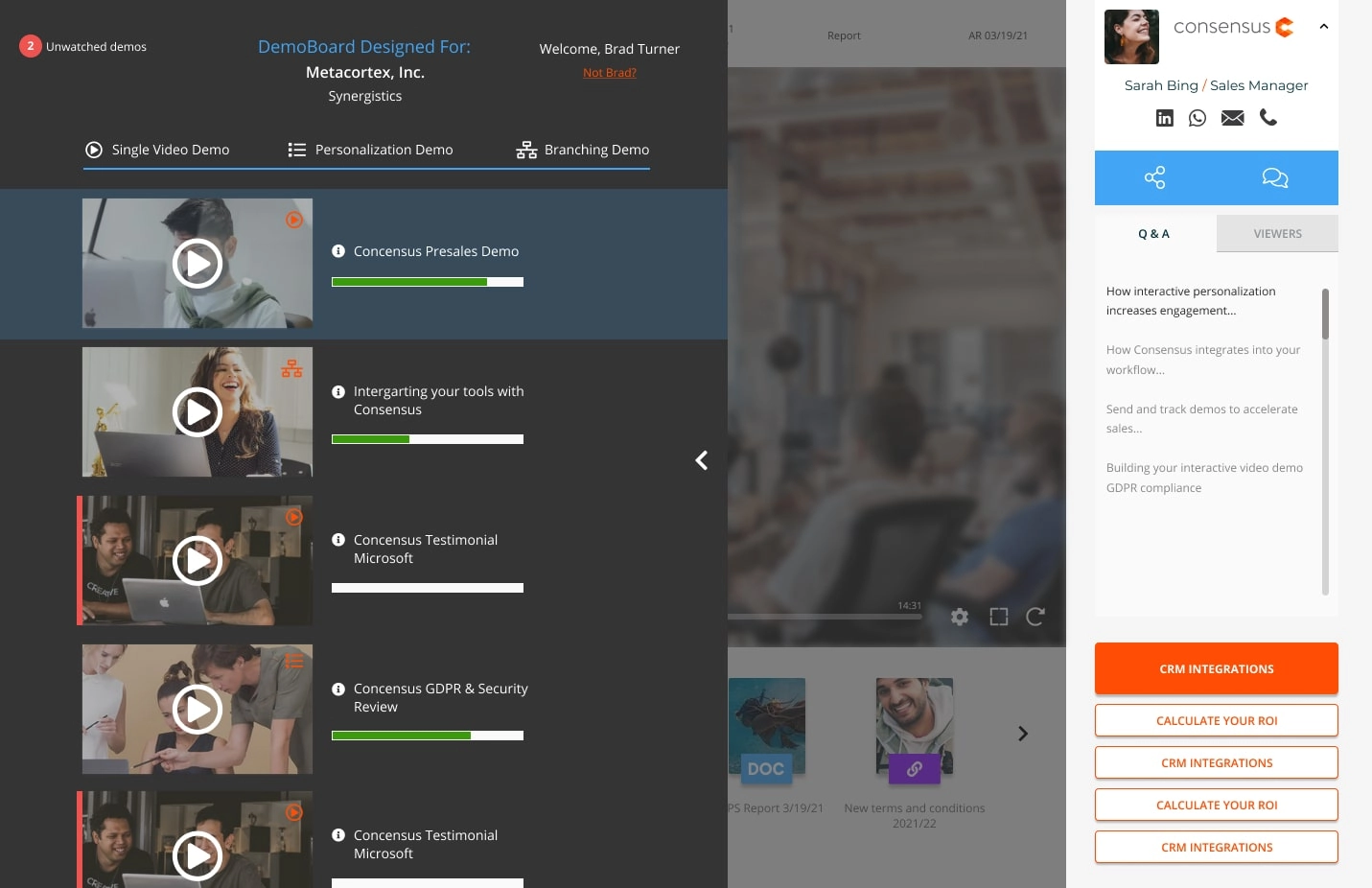
Results and final thoughts.
The product evolved definitely, and it’s always satisfying when that happens. Working in a fast-paced environment like this is fun; there weren’t any major hurdles. The work was fluid, and the Consensus was great.
I know the customer experience has been greatly improved, and I’m sure it is helping their business grow further.

Your dedicated UX studio without the studio salary.
The average salary for a product designer in the United States is between $75,000 and $119,000. Not everyone can commit to such numbers.
Beyond the Pixel makes UX accessible to growing SaaS businesses without the commitment or cost of a full-time employee.